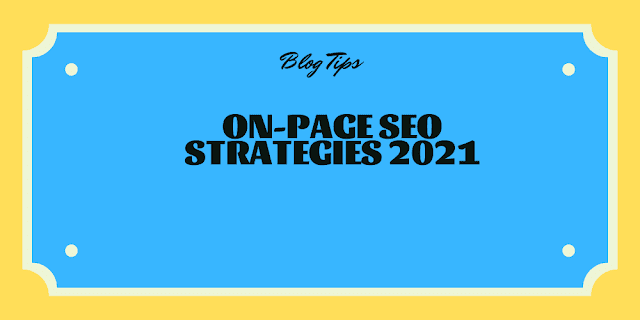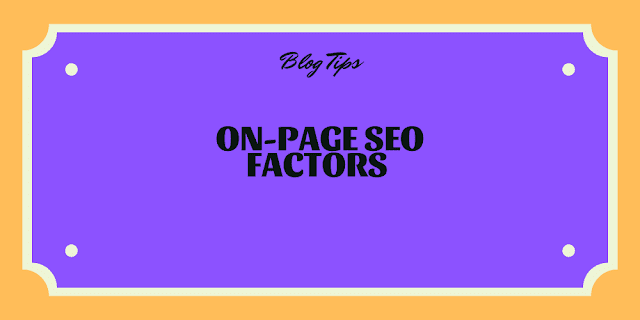On-page SEO Strategies 2021
On-page SEO is a term that defines the optimization of a web page to rank higher in search engine results pages (SERPs). It includes the different elements on a page such as a page title, meta description, h1 headings, and body copy.
The purpose of on-page SEO is to provide you with information and tips on how to optimize your pages for ranking higher in search engine results pages (SERPs).
On-page SEO techniques are helpful in achieving the ranking goals of the website.
On-page SEO practices are not all about meta tags and keyword density.
It is done by writing natural content, optimizing URLs for search engine rankings, formatting headings to be concise and informative, etc.
The main objective of on-page SEO is to make sure that your website is search engine friendly.
On-page SEO refers to all the on-site optimization techniques that are done to improve a site.
Meta descriptions help search engines understand what a web page is about and what the user should expect when they click on a link.
URLs should be short and concise, less than 255 characters.
Headings have one keyword each and should also be short, concise, and relevant to the content of the page.
On-Page SEO Factors
1)Page title
The search engine crawls the web in order to understand how these pages are related to keywords and topics. The page title is one of the most important components for search engine optimization. It plays a major role in how well a website will rank on Google or Bing.
The headline should be short, descriptive, and include keywords that are relevant to the content. It should also be written in an engaging way that will get people's attention and make them want to click through and read more of your content.
Page titles are one of the most important on-page SEO factors and they serve as an indicator of what is found on a web page. They help search engines index content from a page and rank it in searches.
When deciding upon your title, it is important to keep in mind that keywords should appear as close as possible to the beginning of the title, but not more than once.
2)Meta description
Meta descriptions have a significant impact on the click-through rate for a given web page. They are also an essential text snippet in deciding which page to display in search engines.
A meta description should be between 150 and 160 characters while including keywords, relevant text, and other related information. This should be written in a way that makes the content of the website unique, rather than just copying it from the content.
A meta description is an important on-page SEO element that appears below the title of a web page in search engine results pages, on some social media websites, and in browser tabs. The meta description doesn't affect the ranking of your website but it does influence how many people decide to click on your link when they see it in search results.
The best meta descriptions are compelling and relevant so they provide a sense of what you'll find when you visit the page.
3)H1 Headings
H1 headings are one of the most crucial on-page optimization tools for search engine optimization. They are the first heading that is seen on any web page, so it is important to use them wisely. The ideal length of an H1 heading is between 10 and 40 words, though it can go up to 60 words if there is a need.
One of the most important things that SEO-conscious webmasters need to know is that H1 headings are the first heading tags people will see on your website. They also influence search engine crawlers like Googlebot's ability to find and index your content. So, it’s important to make sure that you understand how H1 headings work and how they can help you achieve better search engine rankings.
H1 headings should be short but descriptive. They should not be more than 60 characters long, which is an arbitrary number for now but will likely become a standard at some point in time.
It’s also important to note that using H2 or H3 headings for your content isn’t wrong as long as they follow the main principles of good SEO writing.
4)Body Copy
Body copy is the content that is written on a website, and it’s extremely important for SEO.
Body copy is the content that is written on a website, and it’s extremely important for SEO. There are some rules to follow when writing body copy:
1) Be concise in body copy
2) Write your keywords and use them in relevant places (e.g., in-text links or headers)
3) Use bullet points when they will help readers understand your content

